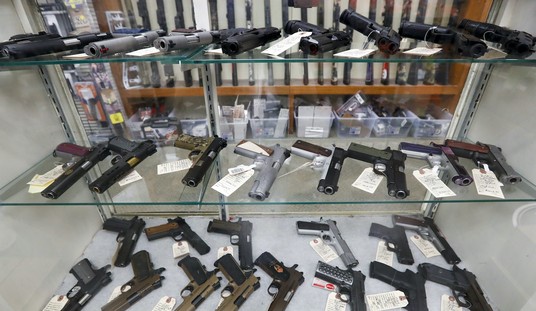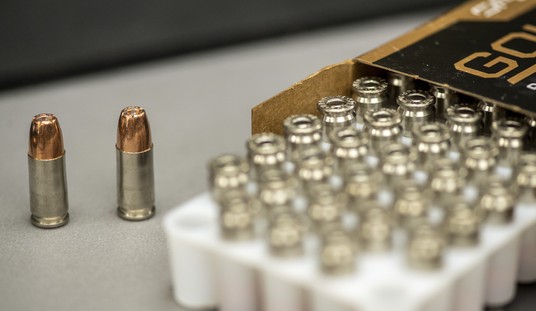Sure, NPR is eager to pitch in when the Vermont branch of the least credible branch of federal law enforcement (the Bureau of Alcohol, Tobacco, Mexican Gun Delivery, and Very Large Fires, or BATMGDVLF) decides to manufacture a crisis to whine for more funding, but the picture accompanying the story is far more intriguing than the story itself.

Does the Vermont field office of BATMGDVLF routinely leave their evidence locker doors wide open, or is this a special perk only afforded to members of the right correct-thinking media” who are down with the cause?”
Second, is the evidence locker actually secure even when the door is shut? That looks like a dropped ceiling, folks. How high is the space between the ceiling tiles and the actual ceiling in the evidence locker and the adjoining rooms and hallway? Is it enough that someone can simply poke an arm through the ceiling or use tools to pull weapons out of the locker, or is there enough space to allow a person to crawl completely into the room?
While I can’t find evidence construction locker standards for the BATMGDVLF, I did find them for other law enforcement agencies. Here’s an example from the Law Enforcement Property and Management Guide from the California Commission on Peace Officer Standards and Training (POST):
The type of material used in the construction of the property/ evidence
room is vital, as the room must be secure from unauthorized entry. The
building materials should ideally consist of concrete blocks with filled
cells or similar material. In addition to the walls, the floor and ceiling
must be impervious to intrusion. In constructing the interior and exterior
walls, the outside elements must be taken into account. It is best to
avoid drywall as it can be easily penetrated. In the event drywall is used,
it should be backed with plywood or a double layer of drywall. The walls
need to extend from the floor to a solid overhead. Never leave space for
entry which may be achieved by removing a T-bar ceiling section and
climbing over walls. The room, if possible, should be designed without
windows. Heating, air conditioning and ventilation system duct registers
must be constructed to prevent entry.
DESIGN & LAYOUT
One of the most important aspects in the design is the need to closely
control certain items, such as firearms, narcotics, currency, and jewelry.
Such items of property, by their very nature, require extra protection,
security, and handling precautions. These items should be segregated
from other property. Agencies may set their own guidelines to determine
the degree of extra security required.
An ideal option is to have available separate, locked and alarmed
room(s) or vault(s) contained totally within the property room. Further
access restrictions to certain areas also enhance security. It is not
necessary, however, for each type of item to have its own separate,
secure area.
It makes you wonder if those walls are up to spec as well, or they are just easily-penetrated drywall.
Next to those issues, the sign posted beside the evidence locker inside the field office is an inconsequential joke. While BATMGDVLF agents have been accused of horrific things over the years (never convicted, mind you), I’m hoping that the warning is just a standard sign posted near most evidence lockers in law enforcement, and not a commentary on the kind of agent that the BATMGDVLF-Vermont generally employs.








Join the conversation as a VIP Member